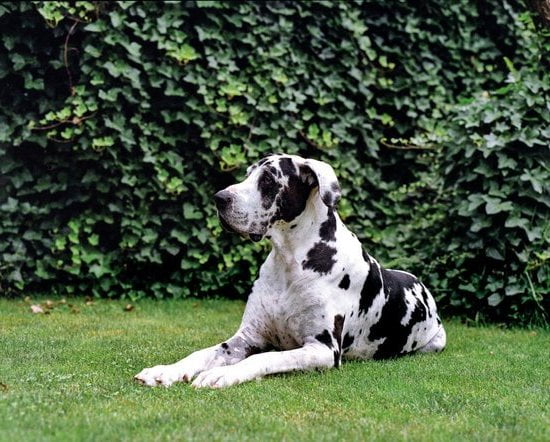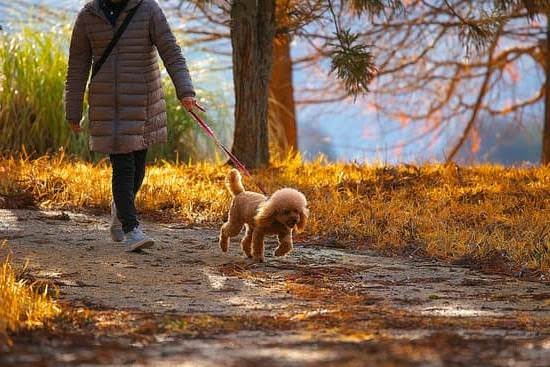Are you tired of your dog jumping on you every time you come home? Learning how to train a dog to not jump on you is essential for maintaining a well-behaved pet. Understanding the behavior of jumping in dogs is the first step in addressing this issue. Dogs often jump as a way to greet and express excitement, but it can become a problem behavior if not properly managed.
Allowing your dog to jump on you may seem harmless at first, but it can have negative effects in the long run. Jumping can lead to injuries, especially for children and elderly individuals. It can also reinforce dominant behaviors and disrupt the bond between you and your furry friend. Setting clear boundaries and rules for jumping is crucial to prevent these issues from escalating.
In order to effectively train your dog not to jump on you, positive reinforcement is key. By rewarding desired behavior such as sitting or staying calm, you can encourage your dog to adopt alternative greetings. Consistency in training is essential for success, as mixed messages can confuse your pet. Redirecting their energy towards more appropriate behaviors and teaching them calmness and self-control are also important strategies in curbing unwanted jumping tendencies.
The Negative Effects of Allowing Your Dog to Jump on You
Allowing your dog to jump on you may seem like a harmless behavior, but it can actually have negative effects on both you and your furry friend. Not only can jumping on you be annoying or even potentially cause injury, but it can also reinforce dominant or aggressive behavior in your dog. It is essential to address and correct this behavior early on to prevent any future issues.
To prevent the negative effects of allowing your dog to jump on you, it is crucial to set clear boundaries and rules regarding jumping. Consistency is key when it comes to training your dog, so make sure everyone in the household enforces the same rules. Using positive reinforcement techniques can also be highly effective in teaching your dog not to jump on you. By rewarding desired behaviors with treats or praise, you can encourage your dog to follow the rules.
One way to train a dog to not jump on you is by redirecting their energy towards alternative behaviors. This could include asking for a sit or down command before giving attention or affection.
Additionally, managing your dog’s excitement levels and teaching them calmness and self-control through obedience training can be helpful in curbing their jumping behavior. Remember that patience and consistency are key components in successfully training your dog, so be sure to dedicate time and effort into teaching them how to properly greet you without jumping.
Setting Clear Boundaries
Dogs are naturally energetic and enthusiastic animals, often showing affection by jumping on their owners. While this behavior may seem cute at first, it can become problematic if not addressed properly. Setting clear boundaries and establishing rules for jumping is essential in training your dog to not jump on you.
Consistent Training Methods
Consistency is key when it comes to training your dog to not jump on you. Use the same commands and techniques each time your dog tries to jump on you. By being consistent in your approach, your dog will quickly learn what is expected of them and what behavior is unacceptable. Remember to reward good behavior and ignore or redirect unwanted actions.
Setting Rules
Establishing clear rules for jumping is crucial in teaching your dog proper behavior. For example, you can teach your dog that they should only greet you when all four paws are on the ground. Avoid encouraging jumping by stepping back or turning away when your dog tries to jump on you. By consistently enforcing these rules, your dog will understand that jumping is not an acceptable way to show affection.
Utilizing Commands
Training your dog to not jump on you can be made easier by utilizing specific commands such as “off” or “down.” When your dog jumps on you, calmly use the command while gently guiding them off of you. Be sure to reward and praise your dog when they respond correctly to the command. With patience and positive reinforcement, your furry companion will learn how to greet you politely without jumping.
By setting clear boundaries, using consistent training methods, establishing rules for jumping, and utilizing commands effectively, you can train your dog to not jump on you successfully. Remember that patience, positive reinforcement, and regular practice are essential in modifying this behavior. Keep in mind that seeking professional help from a trainer may also be beneficial if you encounter difficulties in training your dog yourself.
Positive Reinforcement
One effective way to train a dog to not jump on you is through positive reinforcement. This method involves rewarding your dog for displaying the desired behavior, which in this case would be not jumping. When your dog approaches you without jumping and keeps all four paws on the ground, immediately praise and reward it with treats or verbal affirmations.
This helps reinforce the idea that staying calm and grounded results in positive outcomes. Consistency is key when using positive reinforcement, so make sure to reward your dog every time it behaves appropriately.
In addition to treats and praises, another form of positive reinforcement that can be used is clicker training. By associating the sound of a clicker with good behavior, you can communicate to your dog exactly when it has done something right. This precise feedback helps in clarifying the desired actions for your dog. Whenever your dog refrains from jumping on you upon command or naturally, use the clicker followed by a treat to reinforce that behavior.
It’s important to remember that every dog is different, so what works as a reward for one may not necessarily work for another. It’s essential to observe and understand what motivates your individual pet and tailor the rewards accordingly. The goal is to make staying calm and composed more appealing than jumping up in excitement, ultimately shaping their behavior over time. Training sessions should be short but frequent to keep them engaged and motivated throughout the learning process.
| Positive Reinforcement Methods | Benefits |
|---|---|
| Treats & Verbal Praises | Immediate recognition of good behavior |
| Clicker Training | Precise feedback for desired actions |
| Customized Rewards | Motivation tailored to individual dogs |
Consistency Is Key
Consistency is crucial when it comes to training your dog not to jump on you. By maintaining a regular training schedule, you can reinforce the desired behavior and establish clear boundaries for your furry friend. Here are some key tips on how to effectively train your dog to not jump on you:
- Set clear rules and boundaries: Clearly communicate to your dog that jumping is not allowed. Use verbal commands such as “off” or “down” along with consistent body language to signal that jumping is unacceptable.
- Practice positive reinforcement: Whenever your dog approaches you without jumping, be sure to reward them with praise, treats, or affection. This will help reinforce the behavior you want to see more of.
- Consistently enforce the rules: It’s important to enforce the no-jumping rule every time, not just occasionally. Dogs thrive on consistency, so make sure everyone in your household follows the same guidelines.
By being consistent in your approach and regularly practicing the training techniques mentioned above, you can effectively teach your dog not to jump on you. Remember that patience and persistence are key when it comes to training any behavior in dogs. With time and effort, you can enjoy a well-mannered canine companion who greets you without leaping all over you.
Redirecting Your Dog’s Energy
Dogs are energetic and social animals, and sometimes when they jump on their owners, it is a way for them to release that pent-up energy or seek attention. One effective way to train a dog to not jump on you is by redirecting their energy towards alternative behaviors. Providing your dog with other outlets for their energy can help prevent jumping while also keeping them mentally stimulated and engaged.
One way to redirect your dog’s energy is through exercise. Regular walks, runs, or play sessions can help burn off excess energy and reduce the likelihood of jumping behavior. Engaging in activities like fetch, agility training, or even interactive toys can provide mental stimulation as well. By ensuring that your dog gets enough physical and mental exercise, you can help curb their desire to jump on you.
Another alternative behavior to encourage in place of jumping is sitting or offering a different command such as “paw” or “down.” Teaching your dog basic obedience commands and rewarding them for following them can be a helpful way to redirect their focus.
When your dog learns that sitting or performing another behavior results in a positive outcome, they will be more likely to choose that behavior over jumping. Consistency and patience are key when training your dog in these alternative behaviors, but with time and practice, you can effectively discourage jumping altogether.
| Redirecting Your Dog’s Energy Techniques | Description |
|---|---|
| Exercise | Engage in regular physical activities like walks, runs, or play sessions to burn off excess energy. |
| Teaching Commands | Encourage sitting or offering other commands instead of jumping; reward desired behaviors consistently. |
Managing Excitement
Teaching Calmness
One effective way to train a dog to not jump on you is by teaching them how to remain calm in exciting situations. Start by practicing basic obedience commands such as “sit” and “stay” in a controlled environment. Once your dog has mastered these commands, gradually increase distractions to help them stay focused and composed. Reinforce calm behavior with treats and praise to let your dog know that staying calm is the desired response.
Encouraging Self-Control
In addition to teaching calmness, it is crucial to encourage self-control in your dog. Use impulse control exercises like “leave it” or “wait” to reinforce patience and discipline. These exercises can help your dog learn to resist the urge to jump when they are feeling excited or anxious. By consistently practicing these exercises, you can help your dog develop better self-control and reduce their tendency to jump on you or others.
Creating a Relaxing Environment
Another important aspect of managing excitement in dogs is creating a relaxing environment for them. Provide your dog with plenty of mental and physical stimulation through activities like puzzle toys, interactive games, and regular exercise.
A well-exercised and mentally stimulated dog is less likely to exhibit hyperactive behavior like jumping. Additionally, establish routines and boundaries to give your dog a sense of security and predictability, which can help reduce their overall level of excitement and keep jumping behaviors at bay.
Handling Unwanted Jumping
When it comes to dealing with unwanted jumping behavior in dogs, it is important to be prepared for situations when it happens. Your dog may still try to jump on you even after you have started training them not to do so. In such instances, it is crucial to respond appropriately to discourage this behavior effectively.
One way to handle unwanted jumping is by using a verbal cue or command to communicate with your dog. For example, when your dog jumps on you, firmly say “off” or “down” while gently pushing them away or turning your body away from them. Be consistent in using the same cue every time they try to jump, so they associate the action with the verbal command.
In addition to using verbal cues, another effective strategy is to ignore your dog when they jump on you. By turning away and avoiding eye contact or any form of interaction, you are not reinforcing their behavior with attention. Eventually, your dog will learn that jumping does not get them the desired response from you. Remember that consistency in your response is key to successfully teaching your dog not to jump on you.
Seeking Professional Help
In conclusion, training a dog to not jump on you requires patience, consistency, and a clear understanding of the behavior. By setting clear boundaries, providing positive reinforcement for desired behavior, and redirecting your dog’s energy towards alternative behaviors, you can effectively discourage jumping. It is important to remember that consistency is key in maintaining the training regularly to see lasting results.
Additionally, managing your dog’s excitement by teaching calmness and self-control can help prevent jumping behaviors in the future. If your efforts seem to be ineffective or if you are struggling to address the issue on your own, seeking professional help from a trainer may be beneficial. A professional trainer can provide additional support, guidance, and personalized training techniques tailored to your dog’s specific needs.
Remember that every dog is different, and what works for one may not necessarily work for another. It may take time and effort to see progress in training your dog to not jump on you, but with dedication and the right approach, it is definitely achievable. By following these guidelines and seeking help when needed, you can establish a strong bond with your furry friend based on trust, respect, and positive interactions.
Frequently Asked Questions
How Do You Stop Your Dog From Jumping on You?
To stop your dog from jumping on you, it’s important to train them to understand that jumping is not acceptable behavior. One effective method is to ignore the dog when they jump and only give them attention or affection when all four paws are on the ground. Consistency is key in reinforcing this behavior.
Why Do Dogs Jump on You?
Dogs often jump on people as a way to greet them or show excitement. It can also be a sign of dominance, especially if the dog jumps up high which can be threatening behavior towards humans. Understanding why dogs jump can help in addressing and correcting this unwanted behavior.
What Is the Command to Stop a Dog From Jumping?
The command to stop a dog from jumping could be something as simple as “off” or “down.” It’s important to use a firm and consistent tone when giving commands so the dog understands what is expected of them.
Combine this command with positive reinforcement techniques such as treats or praise when the dog follows the command correctly. Training sessions should be short and frequent for better results.

Welcome to the blog! I am a professional dog trainer and have been working with dogs for many years. In this blog, I will be discussing various topics related to dog training, including tips, tricks, and advice. I hope you find this information helpful and informative. Thanks for reading!





